-
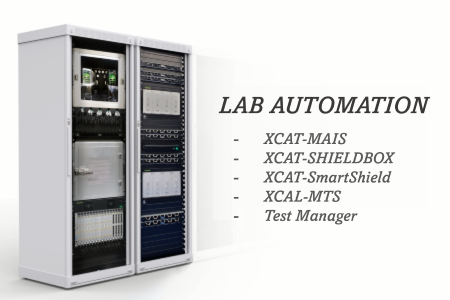
- Accuver 5G NR Lab automation solution
- ▶Watch video [What Complicates 5G Testing] 5G products and components necessitate testing throughout the entire ecosystem to ensure they meet the required standards and specifications. As new devices and vendors are introduced, and software upgrades and new standards are released, the number of conformance and interoperability test cases increases, making testing a complex and time-consuming process. In addition, conducting tests in a real-world environment is highly susceptible to outside interference, making it difficult to achieve repeatable and accurate results. Therefore, labs must conduct numerous test cases with varying levels of complexity to thoroughly evaluate the performance and compatibility of 5G products and components.For operators, testing is a resource-intensive and time-consuming task, requiring a significant investment of both time and financial resources. Nevertheless, thorough testing is crucial to ensure the success of 5G technology and its ability to meet the demands of today\'s data-driven world.[Accuver Lab Automation Solution]Accuver lab automation solution enhances the efficiency of laboratory hardware, software, and human resources by enabling automated and remote control of lab equipment from a distributed setup. This solution produces consistent and repeatable results, replicating a field radio environment within the lab. In combination with the XCAL series, this solution can scale up the test environment to support hundreds of User Equipments (UEs). This field-to-lab solution streamlines the testing process, improves accuracy, and enables faster feedback for optimization and troubleshooting, ultimately reducing the time and cost required for 5G device and network testing.This state-of-the-art solution comprises a channel emulator, shield box, multi UE test system, and test management software.[XCAT-MAIS] XCAT-MAIS is a leading air interface simulation solution that allows engineers to replicate realistic radio wave propagation in laboratory environments. Its system architecture is fully scalable and flexible, with individual phase and amplitude adjustment per path, replicating the wireless channel environment of UEs. XCAT-MAIS offers various real-world test scenarios such as fading, path loss, mobility, and M-MIMO simulations. The operator can simulate complex field tests in the lab using XCAT-MAIS.[ XCAT-Shield Box & XCAT-SmartShield] XCAT-SmartShield ensures that a single UE\'s RF environment remains precisely as specified by the Test Manager. XCAT-Shield Box is a cutting-edge shielding solution for multi-UEs’ OTA testing, featuring adjustable antenna positioning and polarization capabilities, and it\'s essential for conducting complex testing scenarios such as roaming, steering, and load balancing in multi-node networks.[XCAL-MTS]XCAL-MTS is a versatile, mobile-based network measurement and verification solution that supports a wide range of wireless technologies. It monitors and manages the status of a massive number of UEs\' ports, parameter tables, and call statistics. Depending on the scale and purpose of the test, MTS can be substituted with a combination of other XCAL Series products. [Test Manager] The Test Manager intelligently orchestrates all the test components and conducts scheduled tests, producing repeatable test results automatically and remotely from a distributed laboratory. The selected test scenario is automatically repeated to validate the system\'s performance. Once the test scenario is complete, the Report Generator in the Test Manager produces a Summary Report. More in-depth investigation of each test case can be conducted through a Detail Report.Accuver Lab automation solution is a reliable and robust testing platform that has been validated by top operators worldwide. It customizes the test environment to match the operator’s goals and offers top-notch technical assistance.
Apr 14, 2023
-
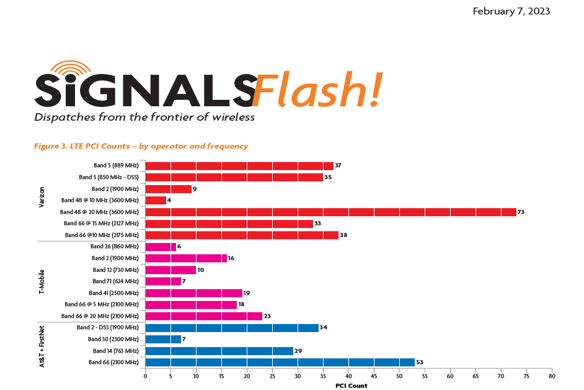
- [Signals Flash] Super Bowl Bandwidth Capacity Scouting Report
- SRG(Signal Research Group) did this study with the support of Accuver Americas (XCAL5). They conducted a scouting report of available LTE and 5G capacity around the State Farm stadium in Glendale, AZ.Based on our tool box of drive test tools, we provide our estimate for the amount of LTE and 5G capacity each operator has, including the mix of low-band, mid-band and 5G mmWave capacity.
Feb 07, 2023
-
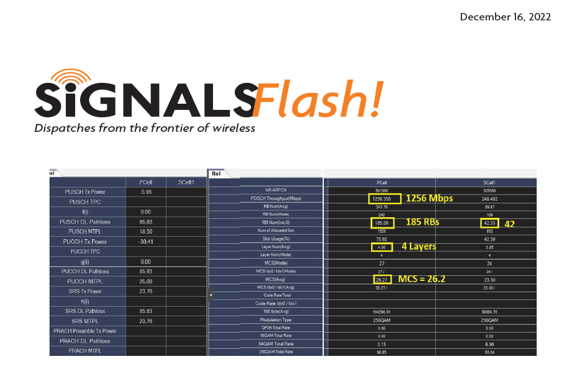
- [Signals Flash] Stop the Presses, MU-MIMO
- SRG(Signal Research Group) did this study with the support of Accuver Americas (XCAL, XCAP and XCAL-Solo). They did some preliminary testing of MU-MIMO, based on testing that we did in the Verizon Band n77 network in the western suburbs of Minneapolis. Although the contents of this report do not reflect a full-fledged benchmark study, they do show that MU-MIMO is alive and well, and potentially heading to a 5G network near you soon.
Dec 16, 2022
-
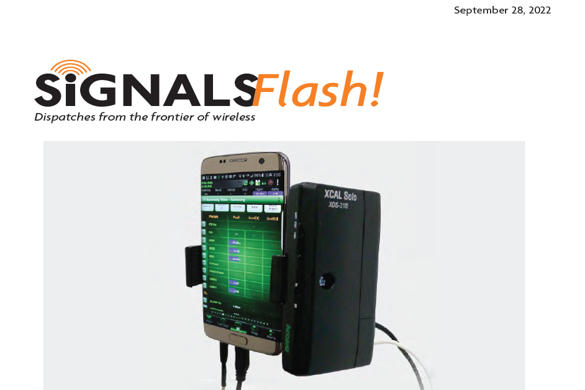
- [Signals Flash] 8-Layer 5G MU-MIMO
- SRG(Signal Research Group) did this study with the support of Accuver Americas (XCAL5 and XCAP). They just completed the industry\'s first independent benchmark study of 8-layer 5G MU-MIMO (Multi-User MIMO) in a commercial network (T-Mobile Band n41) while using a mix of commercial and precommercial devices.This report contains results and analysis from a single test that we conducted at the T-Mobile facilities in Irvine, CA prior to doing more extensive testing in a number of commercial cell sites.
Sep 28, 2022
-
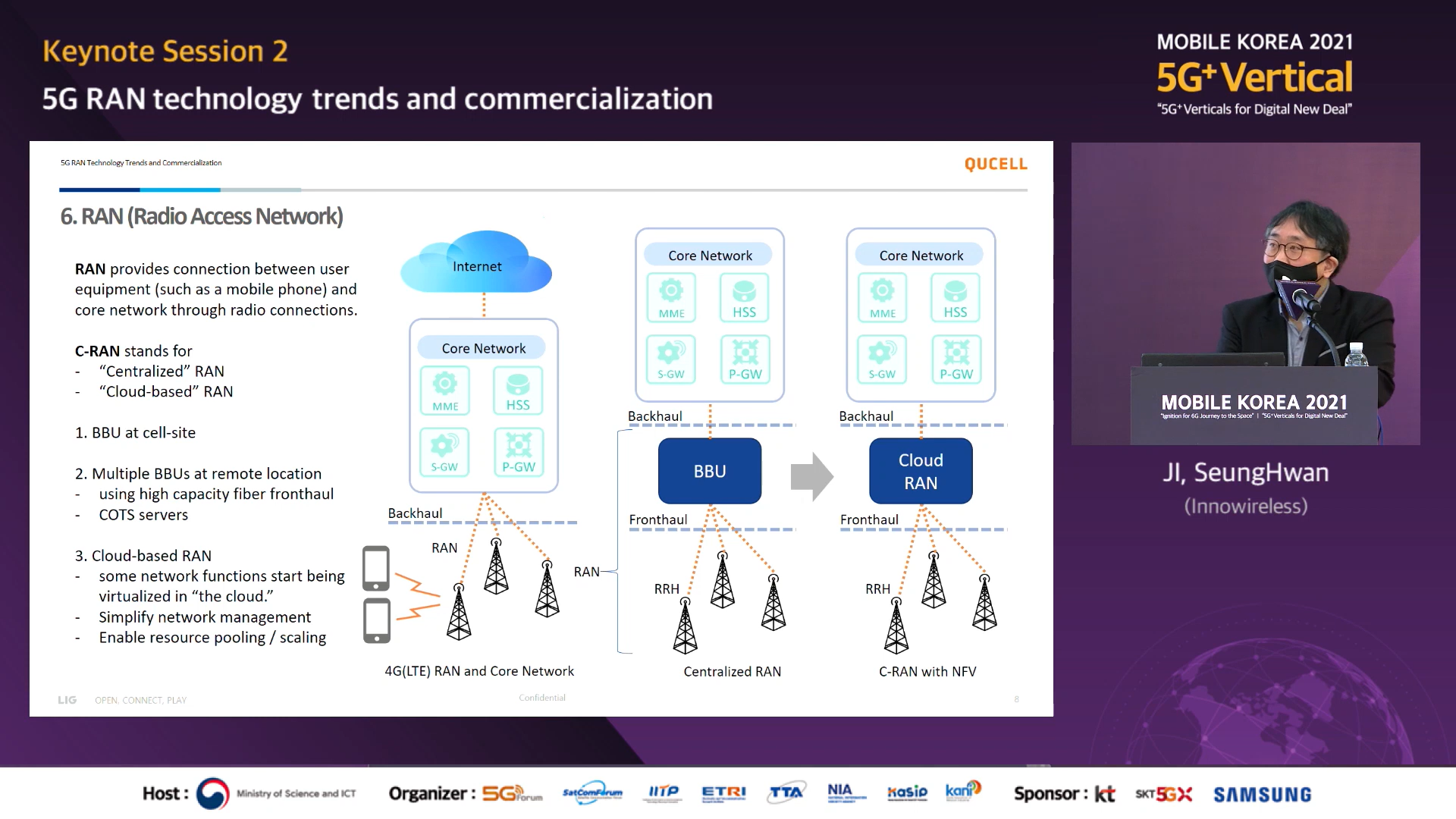
- 5G RAN technology trends and commercialization
- Research fellow Ji Seunghwan presented about 5G RAN technology trends and commercialization at Mobile Korea 2021 held 2021. 11. 26Please download the presentation from the attachment. Video can be found on below Link https://youtu.be/VGFTj_nxJzc
Feb 04, 2022
-
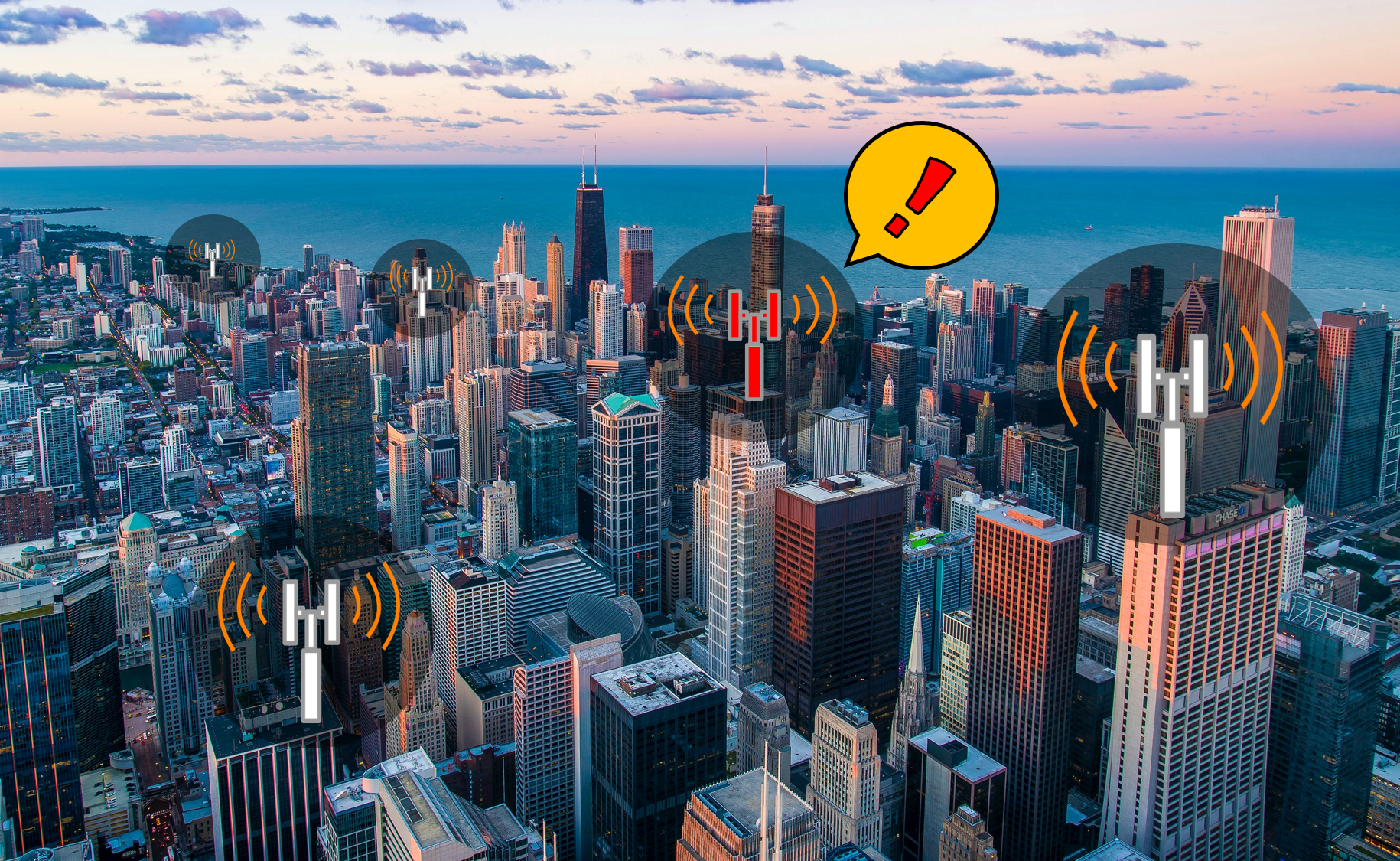
- How to update your 5G base station without risk
- How to update your 5G base station without risk Just as telecom operators around the world built 4G networks in the LTE era, now telecommunication operators need to install numerous base stations to secure 5G coverage. However, since 5G, which has just started to deploy, is not yet technologically mature, risks and unintended costs may arise in 5G network operation. These risks can appear not only for telecom operators but also for 5G network equipment vendors. The newly developed in-LAB field-test technology is expected to dramatically reduce risks and costs by solving the problems faced by these MNOs and vendors. In today\'s information age, Telecommunication has never been so important as these days. Communication failure not only can cause inconvenience in daily life, but it is also a problem that can be life-threatening for someone, so MNOs around the world do their best to maintain a fast and seamless communication environment. However, 5G, which is still short in history, seems to require the continuous update of network equipment for a better communication environment. It would be nice if updates always had the positive effect of improving performance, but unfortunately, base station updates come with risks. Because the base station has a complex structure, a change in SW for any part may sometimes cause failure or performance degradation in unexpected features, and since radio waves are greatly affected by the external environment, the performance of even the same base station equipment depends on the installed environment. There are many difficulties in updating and these difficulties are also costly for MNOs and vendors.In-LAB field test is a solution that dramatically reduces risks by identifying side effects that may occur by SW change in the base station installed in the actual field in advance.Through in-LAB field test, users simulate the same environment as the field environment where the actual base station is installed in their LAB, so there is no need for experts to visit the area where the base station is installed, and the base station and UE after SW update in the in-LAB environment can measure the change in performance ofXCAT-MAIS is a product with an In-Lab Field test solution developed by Accuver. XCAT-MAIS is a solution that allows users to easily build a real wireless network environment in the LAB, identify various problems from the installation of 5G base stations to updates, and supplement them in advance. XCAT-MAIS allows users to simulate various conditions that appear in the real world in the laboratory environment. You can check the network status by moving the UE between different types of base stations, and check the network status at the mountain, entering an overpass, or entering a tunnel. Massive MIMO and beamforming functions, which are very important in 5G, can also be measured.The base station vendor can test the performance improvement and SW update of the base station by building the wireless network environment of the actual field in the LAB, and the MNO is able to test whether there is any side effect in the LAB environment before changing the base station setting of the field or proceeding with the SW update.XCAT-MAIS can be connected with multiple base stations, and it is also possible to compare the quality of base stations. The ability to compare base stations with different performances in various environments not only helps MNOs build 5G networks but also helps network equipment vendors to benchmark other companies\' equipment and their equipment to improve product performance.XCAT-MAIS can easily perform multiple types of complex tests, and MNOs can dramatically reduce time, resources, and risks as well.Accuver has a solution that encompasses not only XCAT-MAIS, but also 5G rollout, network optimization, automation, and core network analysis.Please check the link below for more informationhttp://www.accuver.com/sub/products/list.php?cat_no=1
Jun 17, 2021
-
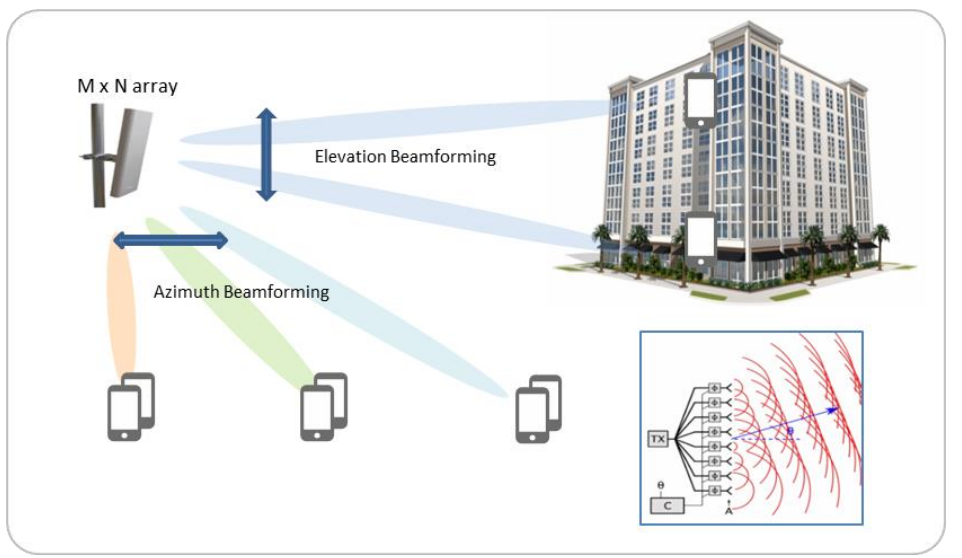
- [White Papers] Beamforming: What it is, why it’s important, and the challenges in testing ...
- [White Papers] Beamforming: What it is, why it’s important, and the challenges in testing its performance
May 15, 2019
-
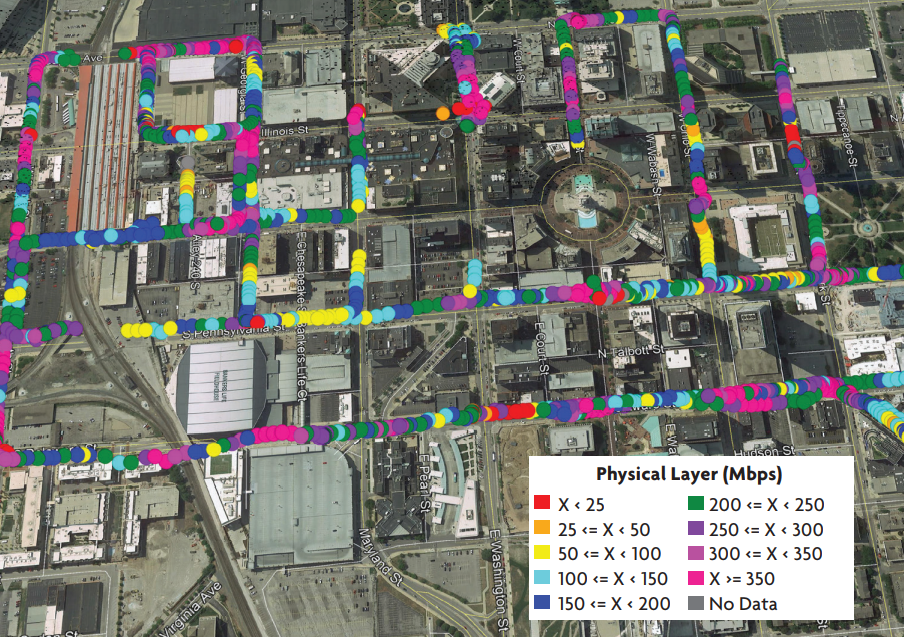
- [White Papers] Small Cells with LAA Testing using XCAL-Solo
- [White Papers] Small Cells with LAA Testing using XCAL-Solo
Oct 10, 2018
-
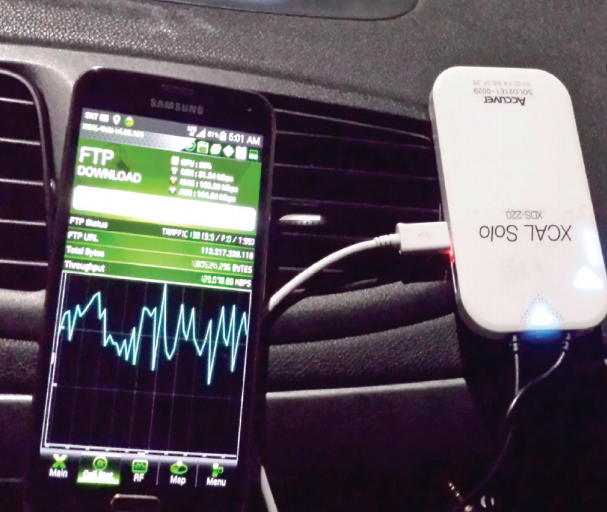
- [White Papers] Analyzing LTE-A Performance
- [White Papers] Analyzing LTE-A Performance
Jul 16, 2018



